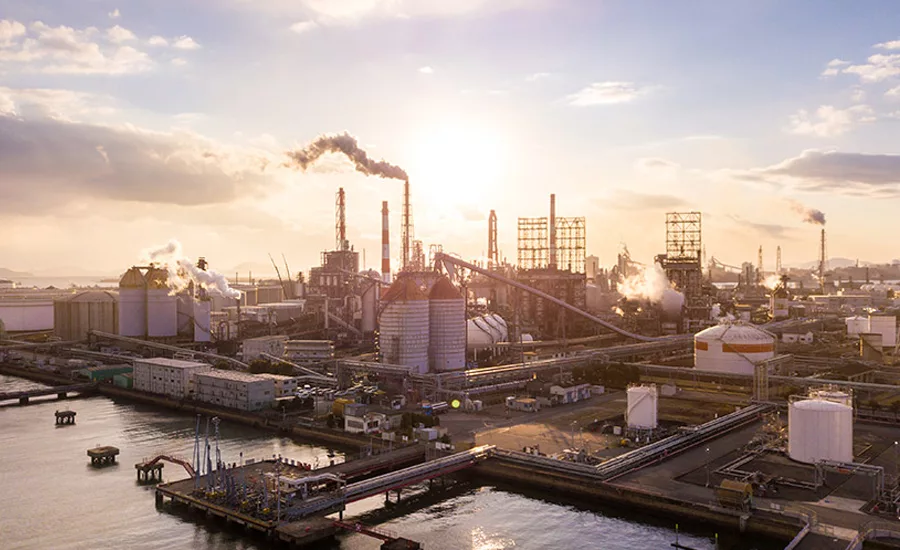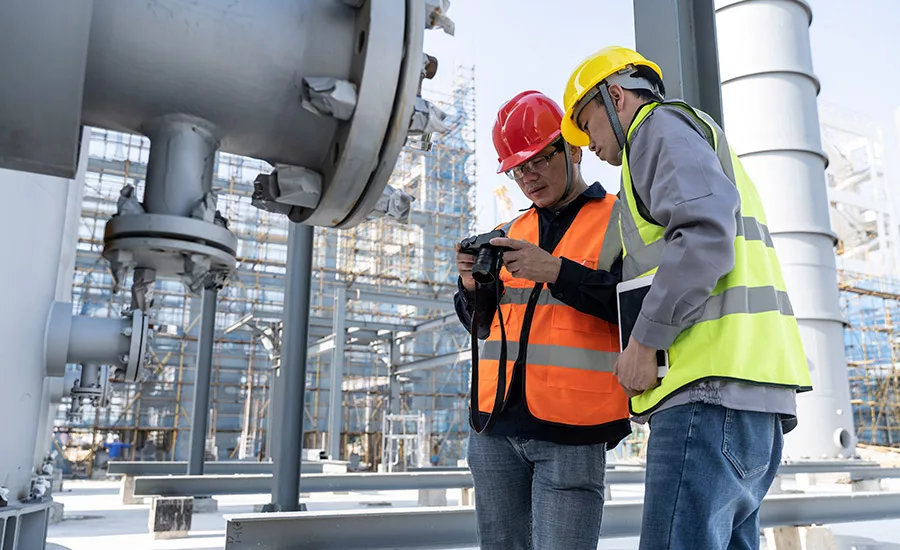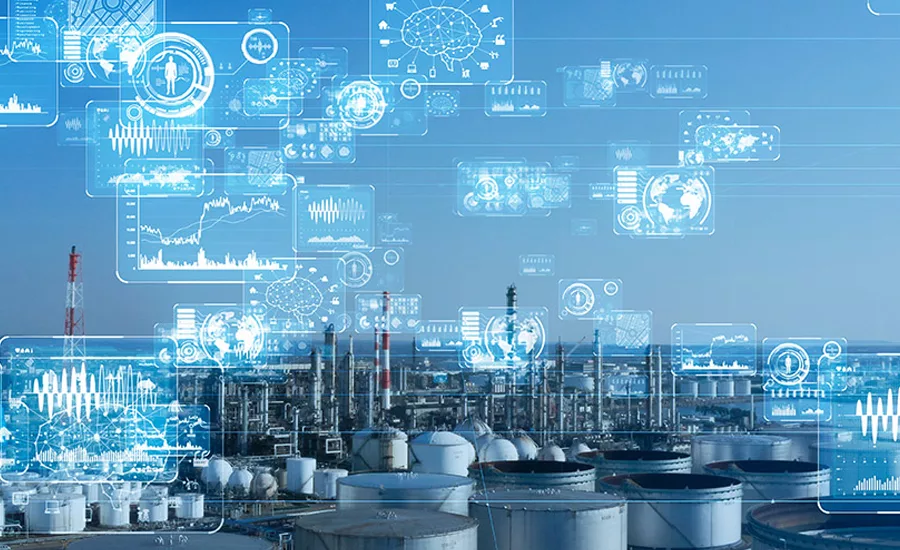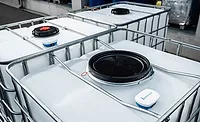Digitalization Is Revolutionizing Chemical Industry Maintenance
The integration of digitalization into chemical industry maintenance marks a paradigm shift, offering unprecedented opportunities for efficiency, cost reduction, and sustainability.

JGalione / E+ / Getty Images

ma li / E+ / Getty Images

metamorworks / iStock / Getty Images Plus
In the dynamic landscape of the chemical industry, the adoption of digitalization has emerged as a transformative force, revolutionizing traditional maintenance practices. This article explores the impact of digitalization on enhancing maintenance performance, addressing challenges, and unlocking unprecedented benefits for chemical enterprises.
In the chemical industry, digitalization refers to the integration of advanced technologies to streamline processes, enhance efficiency, and optimize overall maintenance strategies. This paradigm shift is not merely a technological upgrade; it signifies a fundamental redefinition of how maintenance is approached and executed.
Importance of Maintenance in the Chemical Industry
Maintenance stands at the heart of the chemical industry, playing a crucial role in ensuring the smooth operation of manufacturing plants and facilities. The chemical production process is often intricate, involving a network of complex machinery, precision instruments, and interconnected systems. The reliability and availability of these assets directly influence the productivity, safety, and profitability of chemical enterprises.
In a sector where precision and reliability are paramount, any disruption or failure in equipment can have far-reaching consequences. Unplanned downtime can lead to production delays, revenue loss, and potential safety hazards. Efficient maintenance practices not only prevent these disruptions but also contribute to the overall longevity and optimal functioning of critical assets.
Moreover, in an era where global competition is fierce, companies in the chemical industry need to maximize operational efficiency. Well-executed maintenance ensures that equipment operates at peak performance, contributing to consistent product quality and meeting regulatory standards. It forms the backbone for achieving operational excellence, a key factor in gaining a competitive edge in the market.
Challenges in Traditional Maintenance Approaches
Traditionally, maintenance in the chemical industry has been characterized by reactive approaches, where repairs are carried out in response to equipment failures. While this reactive maintenance strategy may provide short-term solutions, it comes with inherent challenges that can hinder long-term sustainability.
- Unexpected Breakdowns: One of the primary challenges in traditional maintenance is the unpredictability of equipment breakdowns. Waiting for a component to fail before taking action can lead to costly repairs, extensive downtime, and a domino effect on the entire production process.
- Increased Downtime: Reactive maintenance often results in extended periods of downtime. This downtime not only affects production schedules but also increases the risk of cascading failures as neglected issues compound over time.
- Reactive Rather Than Proactive: Traditional approaches tend to be reactive rather than proactive. Instead of addressing potential issues before they escalate, companies find themselves firefighting, responding to emergencies as they arise.
- Lack of Data-Driven Decision-Making: Traditional maintenance methods often lack the utilization of data for decision-making. Without real-time insights into equipment health, companies may miss opportunities for preventive actions, leading to inefficiencies.
Recognizing these challenges is a critical step in understanding the need for a paradigm shift. Digitalization, with its emphasis on predictive maintenance and real-time monitoring, offers solutions to these traditional challenges by enabling proactive measures, reducing downtime, and promoting data-driven decision-making.
Role of Digitalization in Enhancing Maintenance Performance
Predictive Maintenance: One of the key aspects of digitalization is the implementation of predictive maintenance, a proactive approach that leverages data analytics to forecast equipment failures before they occur. This minimizes downtime and extends the lifespan of critical assets.
Real-time Monitoring: Digitalization enables real-time monitoring of equipment performance. This constant surveillance allows for immediate identification of anomalies, facilitating timely interventions and preventing potential issues from escalating.
Role of Enterprise Asset Management Software: Enterprise Asset Management Software plays a crucial role in digitalized maintenance, serving as a centralized platform to manage, monitor, and optimize the entire lifecycle of assets. It enhances decision-making, improves workflow efficiency, and contributes to overall maintenance effectiveness.
Benefits of Adopting Digitalization
Improved Efficiency: The integration of digital technologies optimizes maintenance processes, resulting in increased operational efficiency. Predictive analytics, automation, and connectivity contribute to a more streamlined and effective maintenance workflow.
Cost Reduction: Digitalization not only enhances efficiency but also leads to significant cost reductions. By preventing unplanned downtime, minimizing maintenance-related expenses, and maximizing equipment lifespan, chemical companies can achieve substantial savings.
Successful Case Studies: Several pioneering companies have successfully embraced digitalization, showcasing tangible improvements in maintenance performance. Examining these case studies provides valuable insights into the practical implementation of digital strategies.
Steps to Implement Digitalization in Chemical Industry Maintenance
Current Systems: Before embarking on the digitalization journey, companies must assess their existing maintenance systems. This involves evaluating current workflows, identifying pain points, and understanding the specific needs of the organization.
Appropriate Technologies: Choosing the right digital technologies is crucial. Whether it's IoT devices, machine learning algorithms, or advanced analytics tools, the selection should align with the unique requirements and goals of the chemical enterprise.
Overcoming Resistance to Change: Resistance to change is a common hurdle in the adoption of digitalization. Addressing concerns, providing adequate training, and fostering a culture of innovation are essential in overcoming this resistance.
Future Trends in Digitalization and Maintenance
Emerging Technologies: The future of digitalization in chemical industry maintenance holds exciting prospects with emerging technologies such as augmented reality, advanced sensors, and blockchain. These innovations are poised to further revolutionize maintenance practices.
Sustainable Practices: Environmental sustainability is increasingly becoming a focal point. Digitalization not only improves efficiency but also enables the adoption of sustainable practices, aligning with the global push for eco-friendly operations.
The Human Element in Digitalized Maintenance: Ensuring the workforce is equipped with the necessary skills and knowledge is integral to the success of digitalized maintenance. Training programs and skill development initiatives bridge the gap between technology and human expertise.
Common Misconceptions about Digitalization in Chemical Industry Maintenance
Dispelling misconceptions surrounding digitalization is crucial. It's not just about implementing technology; it's about strategically integrating it to enhance overall maintenance practices. Companies looking to embrace digitalization should focus on a phased approach, clearly communicate the benefits, and involve key stakeholders in the decision-making process for a seamless transition. Additionally, understanding and measuring the return on investment is essential. Companies should establish clear metrics to evaluate the success of their digitalization efforts, ensuring they align with organizational goals. Finally, digitalization is an ongoing process. Continuous improvement and adaptation to evolving technologies are imperative to stay ahead in the dynamic landscape of the chemical industry.
Conclusion
In conclusion, the integration of digitalization into chemical industry maintenance marks a paradigm shift, offering opportunities for efficiency, cost reduction, and sustainability. Embracing this transformation requires a strategic approach, commitment to change, and a focus on the holistic development of both technology and human resources.
FAQs
What challenges do companies face in adopting digitalization for maintenance?
Companies often face resistance to change, uncertainty about technology selection, and the need for workforce upskilling.
How does predictive maintenance contribute to cost reduction?
Predictive maintenance minimizes unplanned downtime, reduces maintenance expenses, and extends the lifespan of critical assets.
Are there any environmental benefits to adopting digitalization in maintenance?
Yes, digitalization enables the adoption of sustainable practices, contributing to environmental conservation.
What role does human expertise play in digitalized maintenance?
Human expertise is crucial in interpreting data, making strategic decisions, and ensuring the effective implementation of digital technologies.
How can companies measure the success of their digitalization efforts?
Companies can measure success by establishing clear metrics related to efficiency improvements, cost savings, and overall alignment with organizational goals.
Learn more about at NEXGEN at www.nexgenam.com.
Looking for a reprint of this article?
From high-res PDFs to custom plaques, order your copy today!





